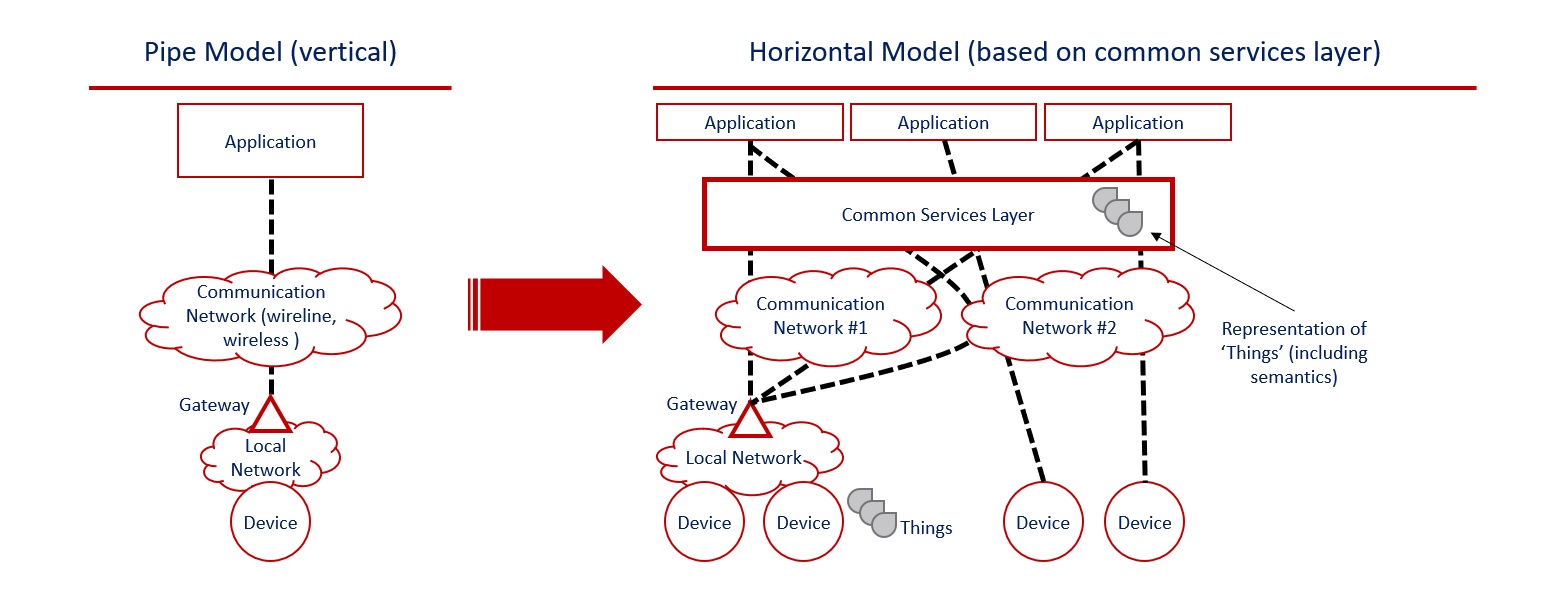Collaboration is essential to advancing IIoT and Digital Transformation

Ken Figueredo
The Industrial Internet of Things (IIoT) will transform the global economy and individual businesses through the proliferation of connected devices and innovative uses of data. So says Ken Figueredo, one of oneM2M‘s contributing members and Market Development consultant for Chordant Inc.
The market research firm MarketWatch predicts that the global IIoT market will be worth approximately $751.3 billion (€698.41 billion) by 2023. This is on the strength of an average annual growth rate approaching 24%. These projections correspond to a market in the early stages of development. Few companies can provide complete solutions owing to the challenge of having to master many components and areas of expertise to build and service end-to-end solutions.
There is a need for mature technical solutions that are designed to scale and support cross-silo interoperability if the IIoT market is to achieve its full potential. This requires new levels of collaboration across an ecosystem of business users, technology providers, software platforms and application developers.
oneM2M and IIC collaborate to advance the IIoT
Market impact depends on industrial scale. This is where collaboration among standardisation bodies and industry alliances can drive adoption of open-standard solutions and disseminate success stories. These beliefs motivated the Industrial Internet Consortium (IIC) and the oneM2M partnership project to collaborate on sharing knowledge and implementation best-practices.
To lay the groundwork, IIC and oneM2M members recently issued a joint White Paper that outlined their institutional objectives and architectural approaches. The IIC was founded in 2014 with the goal of accelerating the adoption of IIoT. It drives innovation through work on new industry use cases and testbeds for real-world applications. The IIC regularly publishes guidelines on business, operational and technical aspects of IIoT solutions.

oneM2M brings together several major information and communications technology (ICT) standards development organisations (SDOs) and their industry members. In 2012, these SDOs agreed to a common goal of promoting an international IoT standard rather than multiple and incompatible local standards. With inputs from more than 200 member organisations, oneM2M oversees an open process to standardise a framework for IoT solutions.
In architectural terms, oneM2M is a middleware technology. It groups several common service functions in an abstraction layer that exists between IoT applications (i.e. business logic) and the communications networks that provide connectivity to end-point devices and sensors (i.e. actuation and data capture). Since the IoT industry continues to evolve, oneM2M handles new specification requirements through release cycles. Release 1 was issued in 2015. oneM2M will shortly publish Release 4 which covers topics such as Fog/Edge computing, 3GPP interworking and semantic reasoning for IoT solutions.
Collaboration in practice
Through the collaboration process, IIC and oneM2M participants identified strong commonalities in their respective approaches. For example, there are synergies between the IIC’s Industrial Internet Reference Architecture (IIRA) and the common service functions, such as registration, device management and security, in oneM2M’s horizontal architecture. This means that system developers can follow the IIRA design methodology and use the oneM2M common service layer for implementation purposes.
oneM2M’s common services can be developed once and reused many times. This creates efficiencies where there are many IoT applications, as in the case of smart buildings or smart factories. The use of common service functions has the added benefit of enabling interoperability across silo-solutions and application verticals. This is the goal that the IIC’s IIRA also seeks to achieve.

A separate IIC publication on ‘Best Practices for Developing and Deploying IIoT Solutions’ demonstrates these benefits in practice. Two member companies, Huawei and InterDigital, demonstrated the potential for interoperable and cross-vendor solutions by linking their respective IoT platforms. This testbed demonstrated that an IoT application on one platform could access data from a sensor connected to the other platform. Conformance to the oneM2M standard made this possible.
Future IIoT landscape
The IIC continues to provide clarity and guidance to the market around IIoT systems. Planned initiatives include IIoT security, distributed computing in edge environments, and a framework for trustworthiness. COVID-19 has forced oneM2M’s April Technical Plenary (TP) meeting to take place online. The July TP will continue oneM2M’s cooperation with the ITU-T. Developments from these meetings, which are reported through oneM2M’s Executive Insights series, will cover topics of joint interest with the IIC.
These include IoT security, semantic interoperability and cross-domain data models, new industrial use cases, Fog/Edge and distributed computing, and best practices for networking and connectivity solutions.
The author is Ken Figueredo, one of oneM2M’s contributing members and Market Development consultant for Chordant Inc.
Comment on this article below or via Twitter@IoTGN
